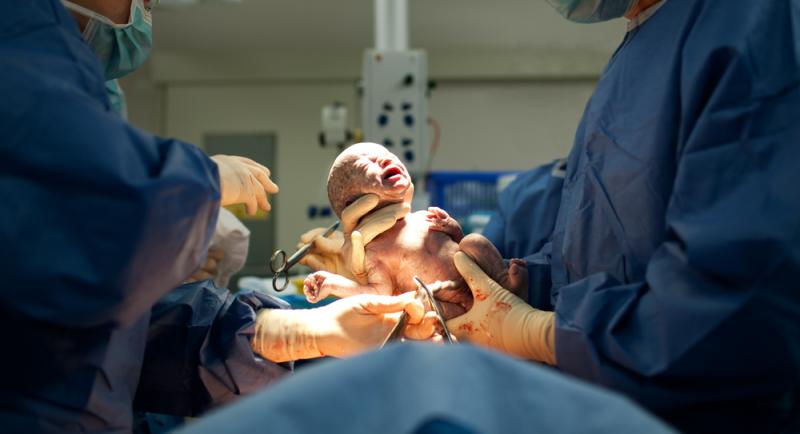Early feeding after caesarean delivery does not increase gastrointestinal complaints




 Crash Caesarean Section for Fetal Distress
Crash Caesarean Section for Fetal DistressEarly initiation of solid food after caesarean delivery under regional anaesthesia does not result in more gastrointestinal complaints and even has high satisfaction in low-risk women, a recent study has shown.
“We suggest having flexibility in terms of postoperative feeding time,” the researchers said. “This may shorten hospitalization time and decrease hospitalization costs.”
This study randomized 262 women with uncomplicated singleton term pregnancies who underwent a caesarean section under regional anaesthesia to either consume a soft food diet at postoperative hour 2 (early feeding group; n=133; 50.8 percent) or eat whenever they wanted to upon return to the ward (on-demand group; n=129; 49.2 percent). The researchers then compared patient satisfaction scores at the time of discharge as well as gastrointestinal complaints.
The two groups had similar major characteristics and surgical procedures. Demographic criteria or surgical procedures also showed no significant differences between the two groups (p>0.05). Mean time to first feeding was 120.00±00.00 min for the early feeding group and 236.59±107.74 min for the on-demand feeding group (p=0.001). [Singapore Med J 2020;doi:10.11622/smedj.2020096]
Notably, no significant between-group difference was seen in satisfaction levels (p=0.366). The early feeding and on-demand groups also have similar outcomes in terms of postoperative patient satisfaction, nausea, vomiting, need for analgesics (opiate or nonopiate), time to first breastfeeding, mobilization, flatus, defection, and hospital discharge (p>0.05).
“On-demand feeding protocols may be difficult to be implement, as one of the serving staff has to be instantly ready for a demand,” the researchers said. “However, patients probably prefer on-demand feeding when compared to eating according to hospital protocols.”
These results showing that early feeding was well tolerated and well received by women undergoing uncomplicated caesarean delivery under regional anaesthesia were consistent with most studies in the literature. [BJOG 2008;115:332-338; BJOG 2017;124:123-131; Caspian J Intern Med 2015;6:67-71; Int J Gynaecol Obstet 2008;101:273-276]
The finding on satisfaction scores was also compatible with those of previous studies. [BJOG 2008;115:332-338; BJOG 2017;124:123-131]
In two earlier meta-analyses, early regular feeding was initiated 6–8 hours after surgery. In the current study, regular diet was started 2 hours following surgery in the early feeding group. [Obstet Gynecol 2013;121:1327-1334; Int J Gynaecol Obstet 2015;128:100-105]
Additionally, a 2016 study in which a solid food regimen was started as early as 106 minutes, as compared to 165 minutes, had timing and outcomes that were comparable with those of the current study, according to the researchers. [BJOG 2017;124:123-131]
“[E]arly feeding and on-demand feeding are tolerable approaches after a caesarean section, and these approaches have similar patient satisfaction levels. Thus, both approaches can be implemented in clinical practice according to physicians’ preferences,” the researchers said.
“Nevertheless, on-demand feeding may be superior, as it allows patients to make their own choice during the postoperative period,” they added.